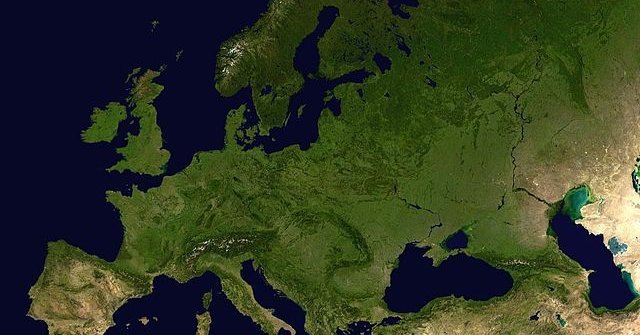Federalism 101
To implement federalism, we should understand first and foremost what it means to establish a federalist entity in a world where federalism is not the natural or intuitive method to run a country. The American political scientist Daniel J. Elazar defined “federalism“ in his 1987 book “Exploring Federalism” as follows:
“..federalism involves the linking of individuals, groups and politics in lasting but limited union in such a way as to provide for the energetic pursuit of common ends while maintaining the respective integrities of all parties…Federalism has to do with the constitutional diffusion of power, so that the constituting elements in a federal arrangement share in the processes of common policy-making and administration by right, while the activities of the common government are conducted in such a way”.
To put it simply, federalism requires the following aspects from the players: Unified Diversity: Federalism brings together different individuals, groups and political entities into a stable but limited partnership.
Coordinated Collaboration: It enables active cooperation towards shared goals while safeguarding the distinct identities and interests of all involved parties. Power Distribution: Federalism involves spreading governmental authority across various levels and entities.
Shared Decision-Making: Constituent parts of a federal system have the right to participate in making and executing common politics and administrative tasks. Balanced Governance: Federal activities are conducted in a manner that upholds the principles of federalism ensuring equitable representation and respect for diverse interests.
Indeed, breaking down Elazar’s definition highlights the challenges inherent in establishing and implementing federalism, as diverse parties with varying agendas, ideals, cultures, and ethnicities must collaborate towards a lasting cooperation. Easier said than done, but history has proven that it can and is being done. The idea of ’world federalism’ then becomes an end-goal, envisioning global cooperation that fosters sustainable peace and development on a worldwide scale. While achieving world federalism may seem daunting, history has shown that progress towards such ambitious goals is possible through incremental steps, dialogue, and mutual understanding among nations and peoples.
The European Model
Naturally, those of us in JEF – Young European Federalists – are always striving to achieve the transformation of the existing European Union and its institutions into a functional federal entity, rooted in shared values, liberalism, and democracy. However, this goal is not a new one, and many similar groups have existed in Europe since the emergence of the first modern idea of European federalism in the early 20th century.
One notable figure in this movement is Count Richard Coudenhove-Kalergi, often regarded as the father of European federalism. His 1923 manifesto, ’Pan-Europa’, serves as a cornerstone for the modern European Union, conceived primarily in response to the trauma of World War I (1914-1917) and the imperative to foster greater cooperation to prevent further bloodshed. While Coudenhove-Kalergi’s ideas initially struggled to gain traction, the devastation of World War II, including the Holocaust, galvanised support for European integration as a means to prevent future conflicts. Visionaries such as Robert Schuman, Jean Monnet, and Konrad Adenauer envisioned bold economic experiments like the European Coal and Steel Community (ECSC), linking European economies to prevent war and promote shared ideals and interests. Over time, the ECSC evolved into the European Economic Community (EEC) and eventually the European Union – a multifaceted union of nations bound by treaties, institutions, and a shared commitment to cooperation and integration. As the years passed, the EU’s institutions were gradually delegated more power by member states, enabling further cooperation in areas such as free movement, economic integration, democratic governance, and security. Today, the EU stands as a beacon of hope and progress, demonstrating what can be achieved when nations set aside their differences and work together towards a common purpose. From the creation of a single market and a common currency to the establishment of supranational institutions like the European Commission and the European Parliament, the EU has inspired similar initiatives around the world.
However, the EU’s journey has not been without challenges and setbacks, as delegating power and fostering cooperation across diverse cultures and complex institutions is not the natural political trajectory. Nonetheless, the spirit of solidarity and cooperation has persevered, underscoring the EU’s enduring commitment to peace, prosperity, and unity.
What’s next?
Now, to achieve a World Federation, drawing inspiration from the European Union, it would be possible build on its model of regional integration and governance through several steps. First, establish common institutions akin to those of the EU, such as a global parliament, executive body and judiciary, to ensure democratic governance, accountability and the rule of law on global scale, perhaps utilising past lessons learned from mistakes done within the League of Nations and the current United Nations (UN). Second, promote regional integration using existing bodies like the EU, African Union (AU), Association of Southeast Asian Nations (ASEAN) and the Southern Common Market (Mercosur) as models and bases of work. Third, foster dialogues and cooperation through international forums such as the United Nations, East Asian Summit (EAS) and Asia-Pacific Economic Cooperation (APEC) to facilitate multilateral cooperation and peacebuilding efforts. Fourth, advance economic integration globally, drawing from the EU’s single market model and leveraging regional initiatives like the North American Free Trade Agreement (NAFTA) and the Pacific Alliance. Fifth, address global challenges such as climate change and poverty by collaborating through international bodies and initiatives like the Arab League and the Organisation of American States (OAS). Sixth, protect human rights and democracy by upholding universal values and promoting inclusive governance mechanism at all levels. Seventh, embrace cultural diversity by promoting intercultural dialogue and respect for cultural differences to foster harmony and cooperation. Eight, empower civil society and global citizens to participate in global governance processes and advocate for transparency and accountability. Ninth, lead by example and demonstrate the benefits of global cooperation through concrete actions and policies.
By incorporating these principles and leveraging existing regional international bodies, we can pace the way for a move inclusive, resilient, and sustainable global governance system – a world federation that fosters peace, prosperity and justice for all.
At its core, the idea of Federalism is not the natural way for humanity to go – clearly, throughout our history, human political institutions were based on tribal, monarchical, and then nationalised concepts. However, since the 19th century and into the 20th century, the notion had begun to achieve success with examples such as Switzerland, Brazil, The United States, India and more. Looking into our own European endeavour, the European Union has the basic capability to become a successful federalist entity, and with more global efforts, to try and eventually achieve a World Federation based on its experience.


Follow the comments: |
|
